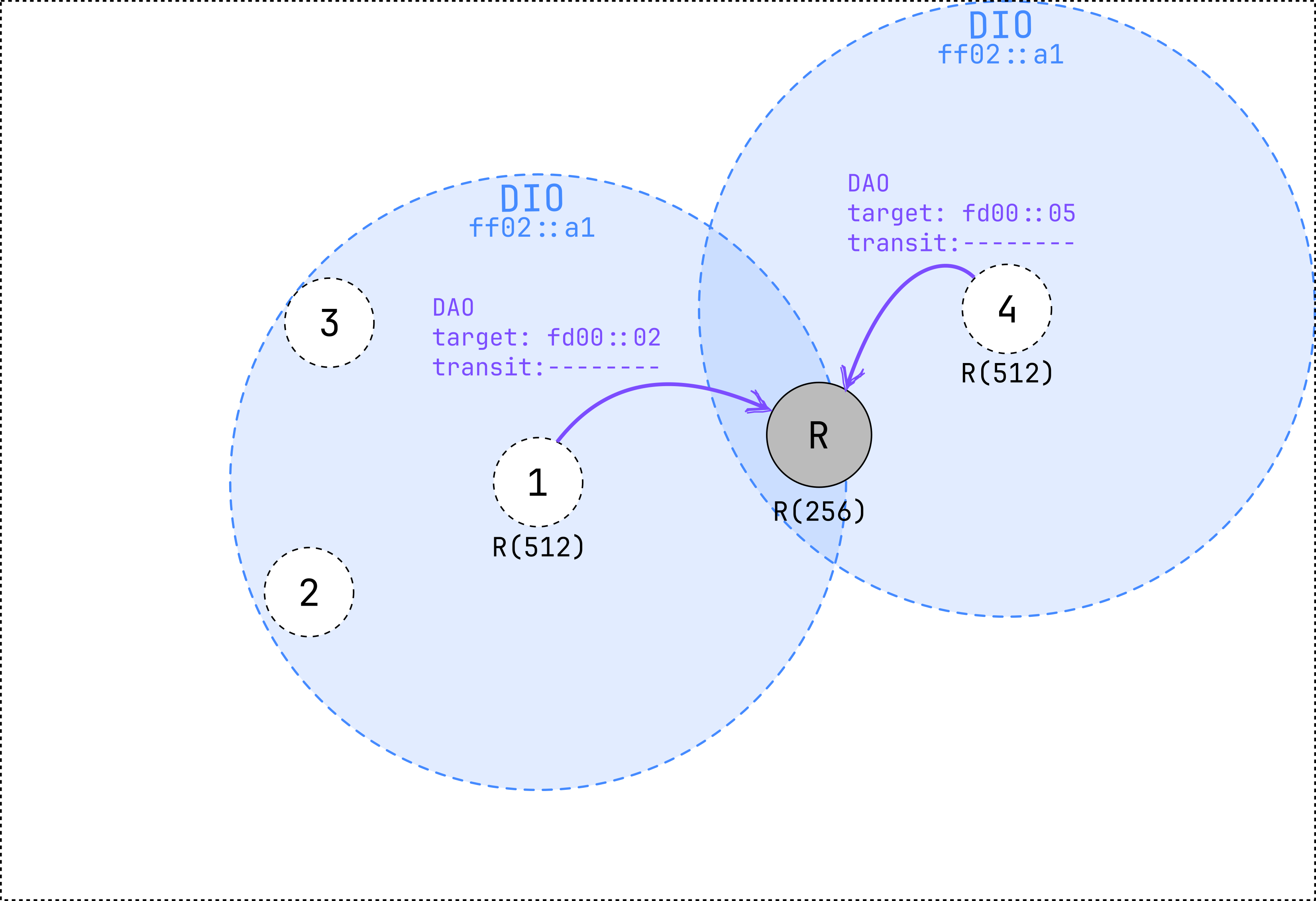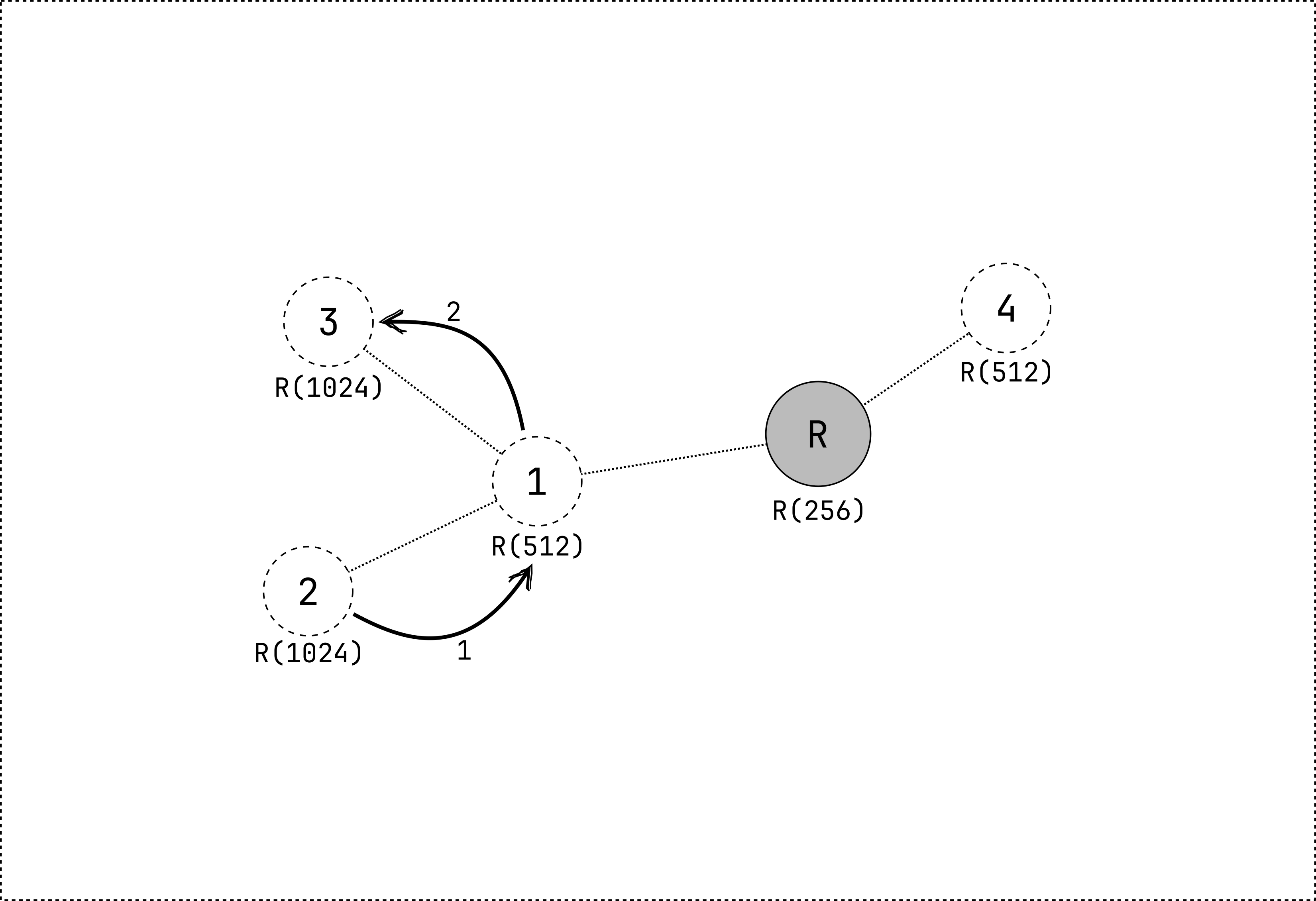MOP2: storing mode without multicast
In this mode of operation, the network is formed like non-storing mode, but the DAO messages are sent to the preferred parent. Each node stores a routing table containing information on how to reach all their descendants (all the nodes in their subtree). A node receiving a DAO transmits a new DAO message to its own preffered parent. The route information is propagated upwards until it reaches the root.
Since the DAO messages are sent in one hop, the transit information option, usually used to indicate the parent of the node, is left empty. Instead, the destination address of the DAO message is used as the address of the preferred parent.
 Figure 1: node 1 and 4 send a DAO message to the root after joining the network.
The transit information option is left empty.
Figure 1: node 1 and 4 send a DAO message to the root after joining the network.
The transit information option is left empty.
Nodes can now send data packets to any other node in the network, since they have a downward route to all their descendants. When a node receives a packet, it first checks if it has a downward route to the destination of the packet. A packet first goes to a common ancestor of the sender and receiver, and then it is forwarded downwards to the receiver.
Node 2 transmits a packet to node 3 (imagine that node 3 is not in range of node 2).
- The packet is first transmitted to the preferred parent of node 2 (node 1), since node 2 does not have a downward route to node 3.
- Node 1 forwards the packet to node 3, since it has a downward route to node 3.

Usage with smoltcp
The RPL network can be formed using the smoltcp library.
The following feature flags need to be enabled: rpl-mop-2 and proto-sixlowpan.
Additionally, the proto-sixlowpan-fragmentation feature can be enabled to allow for fragmentation of 6LoWPAN packets.
The following configuration should be added to the configuration struct for the interface:
#![allow(unused)] fn main() { config.rpl = RplConfig::new(RplModeOfOperation::StoringMode); }
When using RPL as a root node, the following configuration should be added:
#![allow(unused)] fn main() { config.rpl = RplConfig::new(RplModeOfOperation::StoringMode) .add_root_config(RplRootConfig::new( RplInstanceId::from(30), // Change this to the desired RPL Instance ID Ipv6Address::default(), // Change this to the desired DODAG ID )); }
The interface should now behave like a RPL node in MOP2.
Summary
- Every node in the network has an overview of the network topology.
- Packets travel via a common ancestor of the sender and receiver.